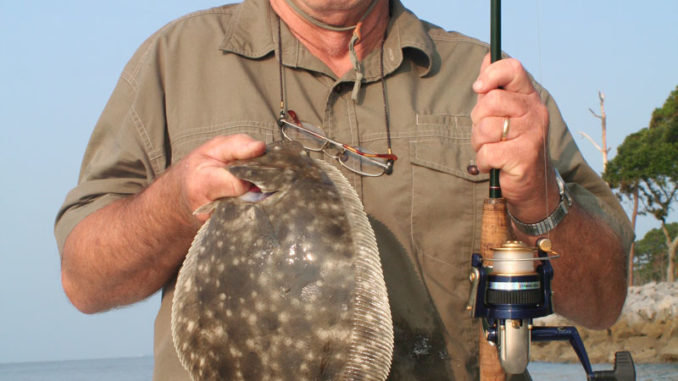
Flounder, trout, ladyfish and jacks are great summer species for Lowcountry anglers.
It’s July, and the weather is perfect for cruising Lowcountry waters, casting to our plentiful gamefish. Unfortunately, while the weather is perfect for cruising and casting, it is not necessarily perfect for catching lots of spot-tails, speckled trout and flounder.
That’s not to say that you can’t catch fish, but as Capt. Tuck Scott of Bay Street Outfitters in Beaufort said, “If your goal is catching a dozen redfish in the heat of July, it probably isn’t going to happen.” But people still want to go fishing in July and it’s a guide’s job to provide a fun trip for their clients.
We do-it-ourselves anglers can take a lead from the guys who are paid to find fish and make outings enjoyable. Scott calls his hot-weather approach, “fishing targets of opportunity.”
First off, the best time to fish during the summer is in the morning, when it’s cooler and there is less chance of pop-up thunderstorms. Since most fishermen want to catch spot-tails, aka redfish, guides normally begin the day looking for them. If the bite is good and sustained, they stick with it, but, if and when the action slows, they may move to points or deep structure to cast for trout or mud banks for flounder, while scanning the area for signs of ladyfish, small jacks or Spanish mackerel. The goal is to make the trips about catching fish and having fun.
So let’s look at how and where to catch hot-weather spot-tails and how to find other fish when spot-tails are not cooperating.
Low-tides flats are most productive because inshore redfish spend most of their feeding time in water less than two feet deep, and they almost always roam in schools. Seasoned fishermen can spot reds even in the cloudy, summer water; actual fish are difficult to see, but flashing bellies often catch your eye. Other signals are V-shaped wakes, “nervous” water that looks different from surrounding water and jumping shrimp or minnows. Sometimes, if you are lucky, you’ll even see blow-ups on bait that are very obvious.
Tidal creeks with holes that hold water at the lowest point of the tide are another low-tide place that can hold redfish congregations waiting for the next rising water. Finding such a honey hole can be a bonanza.
Scott often has his fly-fishing clients tie on spoon flies or shrimp and crab flies for low-tide casting. For fishermen using spinning tackle, he likes MirrOlure suspending plugs, Redfish Magic spinnerbaits or jigheads with soft-plastic Gulp trailers.
When half-tide, rising water begins flooding grass banks, oyster banks and points, baitfish, shrimp and crabs flee to these relatively safe havens while redfish often stage nearby waiting for sufficient water depth to advance. Mid-tide fishing is more like prospecting since you rarely see the fish. Scott uses the same tackle and lures he does at low tide, targeting the edge of the first shelf of oyster and mud banks and the first grass edges as they cover or uncover with water.
Once they have completely flooded, cast directly over oyster points and deeply into the flooded grass with a spinnerbait or a 3/8-ounce, gold Johnson or Nemire Red Ripper spoon, baits that rarely hang up.
At high tide, redfish have so many places to go. If you have a very shallow-draft boat you can look for them tailing on skinny water high-tide flats or you can try a high-tide technique that Capt. Dan Utley often uses: floating a chunk of blue crab or cut mullet on a cork in high-tide openings in tall grass, places he calls “mud holes.”
But if your spot-tail desires look like they will not be satisfied, summer anglers have several species to replace them as likely targets, including: ladyfish, jacks, Spanish mackerel, speckled trout and flounder.
Ladyfish are so much fun to catch that, when they spot them, some anglers will chase them for as long as they can until they disappear. Though they are virtually inedible and are never kept except maybe for crab or shark bait, their slashing strikes and thrilling acrobatic leaps elicit shrieks of excitement.
Diving birds often signal their presence near points or outside of big creeks in the rapidly rushing water of a falling tide. Also, look for them near oyster outcroppings where they can corner baitfish. Ladyfish move around a lot and have large, powerful tails and very slender bodies, making them extremely fast and maneuverable. When they flash at a lure or fly, you often feel a slight bump that was clearly a fish but nothing hooked up. This is not unusual, as they often strike and miss or the hook pulls out of their paper-thin mouths when they violently react to the touch of steel. Cast again but don’t be surprised if even a solid hook-up pulls out when they rocket into the air like a tiny tarpon frantically trying to get free.
Fly fishermen often throw gurgler-type flies at them, and fishermen toting spinning tackle can use surface baits like suspending twitch baits or Pop-R plugs, but ladyfish will strike at almost any lure worked near them.
Crevalle jacks, or more commonly jack crevalle or just jacks, are another summer fish whose presence is often tipped off by diving birds over deeper water. Scott said the smaller ones are found in places similar to ladyfish, but the big ones, weighing 20 to 35 pounds, are sometimes spotted cruising along the surface with the tips of their second dorsal fins or tails sticking out to the water. The big ones are only handled with much heavier tackle, but the smaller ones are good targets for standard redfish setups. Jacks are generally not kept for food.
Spanish mackerel are another schooling fish that cause a ruckus on the surface of the water when they chase bait. They are most often found along rip lines in the middle of the Broad River and over sandbars, and their toothy mouths can cut you off if you accidently hook one. If you see a feeding frenzy of Spanish chasing baitfish, a spectacle that can have these 15- to 20-inch fish launching themselves into the air as they pursue bait, you can switch to long-shanked fly hooks or a spoon with a short, wire leader on a spinning rod. When you find them feeding, they are not hard to catch. Just cast into their midst and strip or reel fast.
Like all mackerel, Spanish are an oily fish, sometimes maligned as table fare. Yes, they are different than the light, flaky meat of trout or flounder but are tasty when grilled or broiled fresh from the water. Plus, they are high in Omega 3s, so they are good for you.
Speckled sea trout don’t like the heat of summer, so fishing early or late in the day is key to catching them. At daybreak, Scott has found them while blind-casting to banks with topwater flies or lures, but that action normally ends with the sunrise. Other times, try casting near structure like fallen trees or rocks in deep water.
Flounder are a summer fish that many anglers focus on as their primary target because of the fine flavor of the fillets. Lots of flounder are taken at night by gigging and in daytime by fishermen with bait, but that’s another story. Daytime anglers can catch flounder as targets of opportunity by blind-casting on expansive, shallow mud flats, under docks or near riprap walls. Scott has had some luck on the last of falling tides outside of very small feeder creeks that are only a couple of feet wide.
Flounder are aggressive predators with large teeth that lay camouflaged on the bottom waiting for unsuspecting prey to pass within range. Fly casters should use a weighted fly to dredge the bottom, while other angles generally opt for a jighead and soft-plastic trailer bounced along the bottom. Flounder strike hard, fight doggedly, and more than a few have jumped off the hook at the boat, so use a net if you want to insure dinner.
If your summer fishing plans call for a limit of redfish, go for it. But if that doesn’t work out, don’t hesitate to go to a backup plan. These other fish — and even whiting or sharks — can get you some action and make your day on the water more fun.
DESTINATION INFORMATION
HOW TO GET THERE — The Beaufort area is easily accessed via I-95, US 17 and US 21. The Alljoy landing on May River, the Checessee River landing and Broad River landing at the SC 170 bridges over those waterways, the Sam’s Point landing on Lady’s Island and the Station Creek landing on St. Helena Island will all put you close to fish.
WHEN TO GO — Summer fishing is better in the morning when the weather is cooler and there’s less chance of thunderstorms. Fish low tides for sight-casting opportunities; blind-casting to structure and live-bait fishing are best for mid- to high tide action. Wading flats normally have enough water when the predicted tide is 7.5 feet or higher at the mouth of the Savannah River.
GUIDES/FISHING INFO — Capt. Jack Brown, 843-838-9369; Capt. Owen Plair, 843-812-3656; Capt. Richard Sykes, 843-838-2245; Capt. Tuck Scott, 843-271-5406; Capt. Dan Utley, 843-368-2126; Bay Street Outfitters, Beaufort, 843-524-5250, Boat and Dock Supply, Port Royal, 843-986-0552; Grayco Hardware, Lady’s Island, 843-521-8060. See also Guides and Charters in Classifieds.
ACCOMMODATIONS — Beaufort Area Chamber of Commerce, 843-986-5400, www.beaufortchamber.org.
MAPS — Top Spot waterproof map No. N233 is available at most local tackle shops.

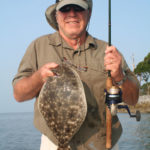
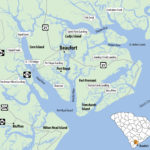
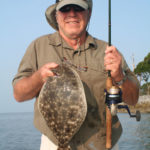
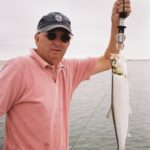



Be the first to comment